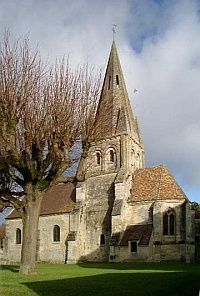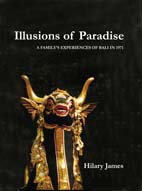
Reviews by Paul Crossley and Philippe Plagnieux on Vos 1-2 page, review by Caroline Bruzelius is below |
The Creation of Gothic Architecture - an illustrated thesaurus: The Ark of God (Vol 3) |
|
Vol 3: "The Evolution of Foliate Capitals in the Paris Basin: the archaic capitals prior to 1130" |
||
Author: |
John James, PhD |
|
Publisheer: |
West Grinstead Publications, London and Hartley Vale, 2006 |
|
ISBN: |
0959600590 |
|
Format: |
Buckram bound, 300mm x 225mm |
|
Price: |
Aud$770.00 (+ P&H)
(Due to the size and weight of this volume you will need to contact us to provide your location details so that shipping costs can then be calulated ) |
|
From the Author:
THE ARK OF GOD is a comprehensive pictorial history of Early Gothic churches in the limestone region of northern France known as the Paris Basin. The Paris Basin contains 1,420 churches with work from these years. Most have never been published. The photographs will illustrate over half of these which significantly contributed to the creation of the new architecture with the aim of using the evolution of foliate carving to date them, and from this to create a comprehensive history of this most creative period.
Note: The complete set of work is contained in 5 volumes
(Volumes 1&2, Volume 3 and Volumes 4&5)
DESCRIPTION:
Volume 3 offers a complete collection of all the capitals carved in the Paris Basin before 1130, few of which have ever been published before. They are magnificent, most taken with the best digital equipment, and many are illustrated in half-page format.
The text includes a profoundly significant analysis: That these carvers pursued what might be called a Quest for Order, a quest that grew into an obsession over the next two generations. By following each step in this quest in the dateable buildings in the rest of Europe, James has dated nearly every campaign in the Paris Basin to within ±5 years - a unique achievement possible only because every one of the 147 remaining buildings have been included and analysed.
This approach provides the evidence that pointed arches and rib vaults were both being employed in the Paris Basin from the mid-1080s - not twenty to forty years later as current theories would have it.
The analysis is backed up by a full documentary analysis by Dr Chris Henige and a discussion of the academic literature on the dating of this period by Sarah Dillane.
Volume 3 provides valuable insights into the development of Early Romanesque carving and architecture prior to the seminal work at Chartres and Saint-Denis. It complements vols 1 and 2 and, with the later volumes, aims to establish from all the evidence a comprehensive chronology for the Creation of Gothic Architecture.
Review from Caroline Bruzelius, Speculum April 2009?
In this monumental study, James and several collaborators have brought together a formidable resource: the photographs of some 9,800 capitals (as well as a few larger architectural views) from about 1400 monuments built in Northern France between roughly 1050 and 1250. The author’s purpose is to provide “an overall and general chronology [of medieval architecture in Northern France] from the study of every example of a single repeatable type of decoration: foliage,” the element of capital sculpture he has selected as the most representative of development and change in medieval architecture.
The first two volumes concern the morphology of capital forms between 1170 and 1230. By selecting the foliage leaf on capitals, and utilizing a system that has its origins with Morelli’s mode of analysis (the “small detail,” or “casual work”), James sets out a chronological grid from c. 1170 to c. 1240 in which the style of capitals creates the basis for a new chronology of medieval architecture. Other types of architectural details (such as moldings) are not discussed in these volumes, though in some cases such data is implicit for the analysis of a monument (such as Chartres).
The capitals are divided into three over-arching segments: 1. the “archaic” group, from c. 1050 up to 1130; 2. the “formals” from 1130-1170; and finally, 3. the “naturals,” after1170. Within these subsections the material is organized by decade and then by site in alphabetical order.
The first volume consists of an introduction and short chapters on nomenclature and terms, methods of dating, the concept of “decadic modes” (the organization of capitals into decades in relation to carving techniques and formal conception), and a short chapter on Canterbury Cathedral as an example of a securely dated monument to provide part of the chronological frame. The rest of the volume is organized into decades, and within each decade the sites are placed in alphabetical order.
Some subsections contain a short introduction to the monument (often only a few sentences), followed by photographs of capitals identified by date and location. Thus, in the chapter “The 1170s,” for example, a first section on the choir of Saint-Remi in Reims has four columns of text and roughly 12 columns of capitals (Vol. 1, pp. 240-252); in the chapter “The 1180s,” Saint Remi appears again (pp. 491-492) with capitals from the following phase of construction. Volume 2 continues with the series of decades beginning with 1200 and concludes with an appendix of short extracts from documents with the original Latin text and English translation, arranged in alphabetical order by place name and chronologically within each section. Nowhere in these volumes is there the pretense of providing extended discussion of a site; references to published studies are limited to a few brief remarks on dates.
Volume 3, published in 2006, forms the first volume of Part B, and is dedicated to “The Evolution of Foliate Capitals in the Paris Basin: the Archaic Capitals prior to 1130.” The third volume seems more tangibly a team project, including James’ wife, Hilary, Chris Henige, who worked with the author on volumes 1 and 2, and Sarah Dillane, responsible for the bulk of Chapter 3 on traditional methods of art historical analysis. The use of digital photography in Volume 3 has meant a much higher quality of the images. In this volume James provides a chapter on stone cutting techniques and the developing conception of sculptural form in the 11th and early 12th centuries.
Capital style has long been used as a fundamental component in the dating of construction campaigns. Transverse analysis across a wide swath of buildings, large and small, was anticipated by some of the great scholars of the early 20th century, such as Lefèvre-Pontalis (to whom, along with Robert Branner, the first volume is dedicated). But the scale of James’ enterprise far surpasses any previous attempts at the systematic collection of this type of data, which is why this study is so very useful What is new here is the extent and depth of James’ comparative approach, the exclusive focus on capitals, and the vast scale of the enterprise. With over 9000 capitals illustrated, the author has provided a larger cross-section of capitals, recorded monument by monument, than any available before. In a work of this scale, there are of course occasions to quibble. Some capitals that the author dates to one period look just like capitals from another - for example, in “The 1200s” a capital from the Noyon west porch, seems identical to capitals from, say, the Ste. Chapelle. These kinds of uncertainties present themselves regularly. There are other types of issues, too: in Volume 1, p. 2, James describes capitals as the “rapid personal statements of the carver,” but how exactly can this be reconciled with broad trends in the evolution of style to the extent that it is possible to “plant” each capital within a decade? Then there is the problem of whether capitals were mass-produced in the workshops prior to positioning in the building, with possible delays of up to a decade or more in their placement in the walls. This would be a concern particularly with large-scale architectural projects, where huts for the specialized production of certain building parts (tracery, capitals, bases, etc.) produced prefabricated parts, work which proceeded all winter while wall construction was suspended. Above all, James’ method is at its heart formalist and stylistic.
Although he expresses skepticism about stylistic analysis, he is obliged to use it himself in spite of his effort to provide an objective analytical grid. Any number of circumstances could have prompted the continuation of an “older” style in a new phase of construction, including cranky foremen and a stable and isolated workshop. For example, in the Gothic architecture of Naples, it seems likely that workshops carved crocket capitals in a “French” style for many projects, royal or otherwise; the prestige value of these forms, as well as the isolation of the workshops from other active influences in the period, led to a kind of ossification and resistance to innovation and change: in some contexts, then, the persistence of capital style might sometimes have been driven above all by ideological and associative issues. Nevertheless, these volumes are a fundamental resource for the study of medieval art in northern France, and every library associated with the teaching of medieval art and architecture should have them.
James and his collaborators have assembled a staggering number of images and a broad chronological index of information that comes from more than a 1500 large and small buildings scattered through the countryside of the Ile-de-France and Picardy. His work reminds us of the extraordinary explosion of religious building in Northern France and the remarkably high level of technical skill that developed in France in two centuries of building. This broad survey is also a stunning testament to the huge economic resources invested in the construction of churches in this moment of France’s history.
These volumes should not be approached as an answer to all questions; to the contrary, James has explicitly (and intelligently) stated that they are tools for research rather than an end in themselves. What is important is that the author has “loosened up” (his own term) the ways we have been taught to understand the origins and development of Gothic architecture (see especially Volume 3, pp. 13-16). Our narratives on this period are based on a series of analyses that go back to the mid-19th century and were largely based on the study of the big buildings.
But is there really any reason why the earlier studies, wonderful though many of them are, have acquired the importance of canonical texts? The Ark of God will become a reference point for any future study of medieval architecture in Northern France because it provides a near-encyclopedic repertoire of images of capitals that are often hard to see and photograph. In an effort that is exhausting to contemplate, James has provided a magnificent overview of the surviving sculptural production for almost 200 years of building and decorating churches in Northern France, “to provide the evidence in all its immensity.”








